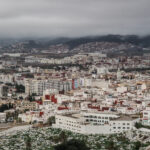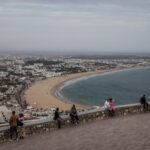El Caminito del Rey, located in the province of Malaga, is a breathtaking and exhilarating footpath that winds its way through the stunning El Chorro Gorge. Known as the “King’s Little Pathway”, it offers an adrenaline-pumping adventure as it clings to the sheer cliffs, suspended high above the Guadalhorce River.
Originally it was constructed for workers to access a hydroelectric power plant. The construction began in 1901 and was finished in 1905. King Alfonso XIII crossed the walkway in 1921 for the inauguration of the dam Conde del Guadalhorce, and because of that the trail became known by its present name. The original path deteriorated over the years, and there were numerous sections where part or all of the concrete top had collapsed. Few of the original handrails remained, although a safety wire ran the length of the path. Several people died on the walkway and, after two fatal accidents in 1999 and 2000, the local government closed the entrance.
The regional government of Andalusia and the local government of Malaga agreed in June 2011 to share the restoration costs of €9 million. The project took approximately three years to complete.
Today, the scenic route provides awe-inspiring views of the dramatic landscape, featuring rugged rock formations and the turquoise waters below, making it a must-visit destination for those seeking both natural beauty and a memorable outdoor experience.
How to get there?
Car
Take the A–357 motorway and go towards the MA-5403, through the Towns of Cártama, Pizarra, Carratraca, and Ardales. This route is 59.1 km long, and it takes about 50 minutes to get there.
You can park in the Visitors’ Reception Centre Parking for 2 EUR per day. There you will find the shuttle bus stop. Once you finish the hike at the Southern Access (near El Chorro), the shuttle bus will take you back to the parking. The bus ticket costs 2.50 EUR.
Train and bus
First, take a train to El Chorro – El Caminito del Rey Station. Then, change to the shuttle bus going towards the northern access point. It takes about 2 hours to get there from Malaga.
Shuttle bus trips start at 08:30 from the Southern area and operate every 30 minutes until 16:30. For the train schedule, check at the official site of RENFE.


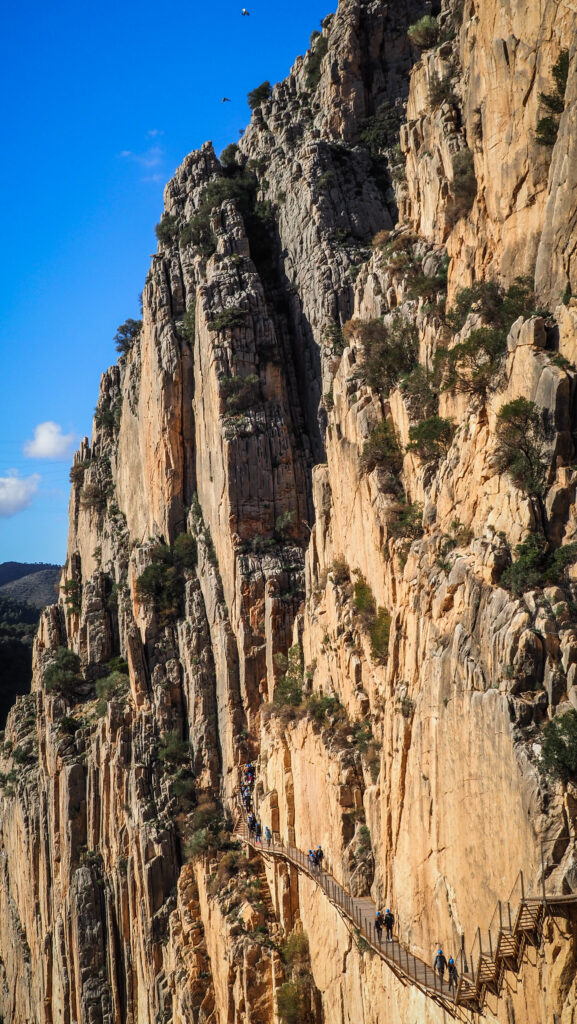
Organized tour
In this situation, you don’t have to worry about anything. Just come to the agreed meeting point and enjoy the bus ride. As I didn’t have a car and wanted to save some time, it was my chosen option. The tour started at 8:30 AM at the pick-up point near the train station and finished at 3 PM at the same spot. I signed up for the one advertised on Get Your Guide, and the link to it is below:
The best time to visit
The trail can be visited at any time of the year. The best is to avoid summer as then it gets crowded. I visited in December and it was really nice, although the temperature was about 15C and it was windy so better to have a warmer jacket.
Tickets
You can reserve and purchase your ticket through this website or directly at the northern access of the Caminito, at the ticket office. Booking in advance is highly recommended at any time of the year as the number of tickets is limited. Guided visits cost 18 EUR and general entry tickets cost 10 EUR.
The guided tours from Malaga cost about 50 EUR and include transportation, entrance tickets and a guide.
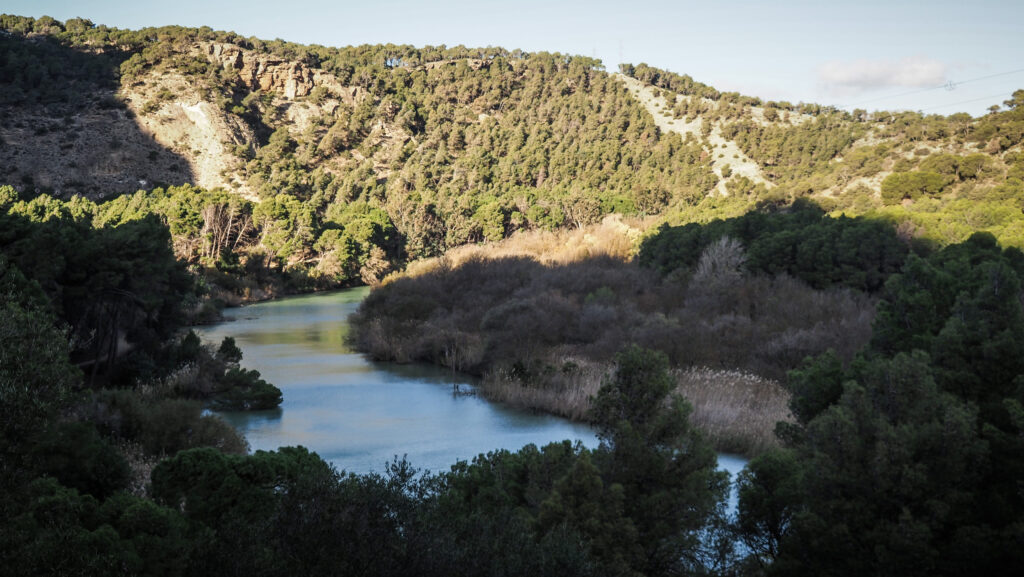
Opening hours
El Caminito del Rey is open from Tuesday to Sunday, except December 24th, 25th, 31st and January 1st.
Trail details
El Caminito del Rey is a one-way trail and you must start at the northern access point. According to me, the difficulty of the path is easy as it mainly descends although there are both uphill and downhill parts.
The full length of the path is 7.7 km, of which 4.9 km are accessways and 2.9 km is the boardwalk. Covering that distance can take between 2 to 4 hours, depending on your pace. Don’t rush though, as the views are worth taking it slowly.
Once you arrive at Bar Restaurante El Kiosko, you must decide which access trail you want. The first option is a 2.7 km long trail of Gaitanejo. The second option is 1.5 km long as it takes a shortcut through the pedestrian tunnel. Both trails arrive at the Northern Access Control Booth which is the official start of the Caminito del Rey.
The tour
As mentioned before, I opted for a guided tour starting from Malaga. The meeting point was near the train station and pick-up time was scheduled for 8:30 AM. We left on time and soon received a warm welcome from our two guides: Violetta and Christian.
After about an hour, we arrived at the parking where the bus stopped for a toilet break. From there, it was another a few minutes drive to the start of the hike. As we exited the bus, everyone got a small bottle of water.
We took the access road that goes through the pedestrian tunnel. After the tunnel and the bridge, we turned around to watch the interesting rock formation consisting mainly of four huge hollows.


Soon, we arrived at the reception booth, located near the Gaitanejo Hydroelectric Power Station, which is one of the oldest in Spain. There is where we got the helmets.
As we progressed, our guide pointed out another interesting sight – the remains of troglodytic houses which were made using the softness and hollowness of sandstone for their construction. They were living places for people involved in shepherding and agriculture, but also for dam construction workers and workers of El Caminito.

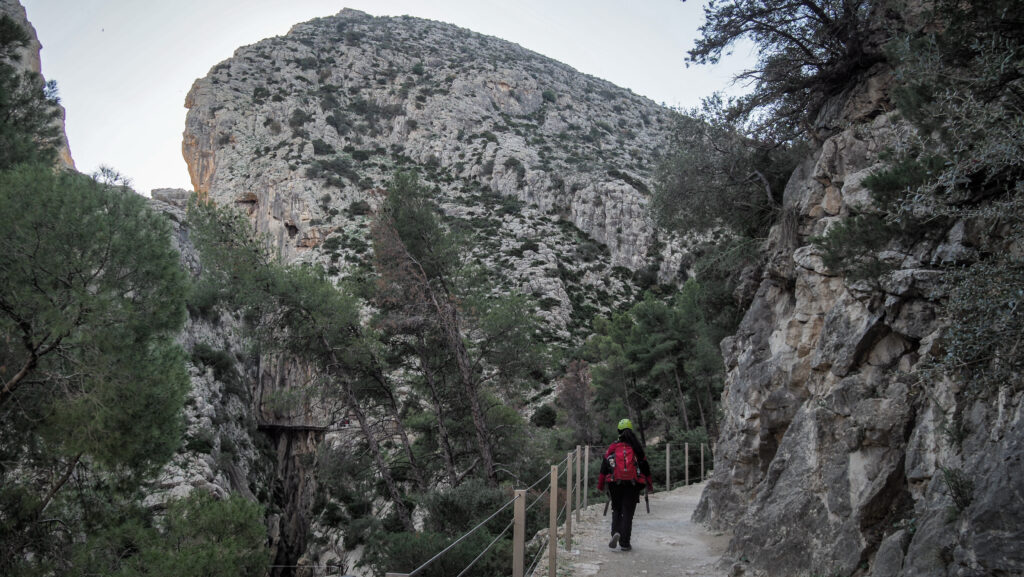
The rocky wall further ahead where commemorative plaques hang, marks the water level reached on different historical floods caused by strong storms. On the right-hand side, you will find an information panel about the history of El Caminito del Rey, after which you will enter the boardwalk leading into the Gaitanejo Gorge. The distance from wall to wall is less than 10 meters and it’s pretty deep too. Impressive!
We continued strolling on the boardwalk passing through another small tunnel. Alternatively, you can go around it if you wish. A bit further on there is the bridge which was crossed by King Alfonso the 13th in 1921.
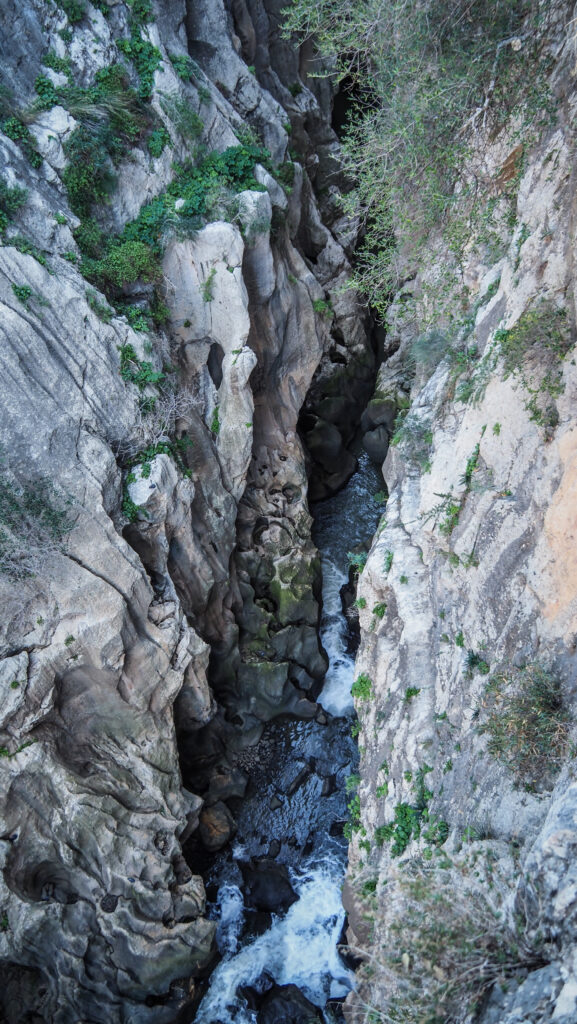



The most impressive parts of the trail were still ahead of us though. The tall rocky mass of San Cristobal’s Mountain towers above the boardwalk and is just breathtaking.
The Glass Balcony that stands on the rocky buttress is a vertigo test for many and it allows one to fully admire the vastness of the canyon. This was my favourite section of the hike. And there was another highlight just in front – the Hanging Bridge!
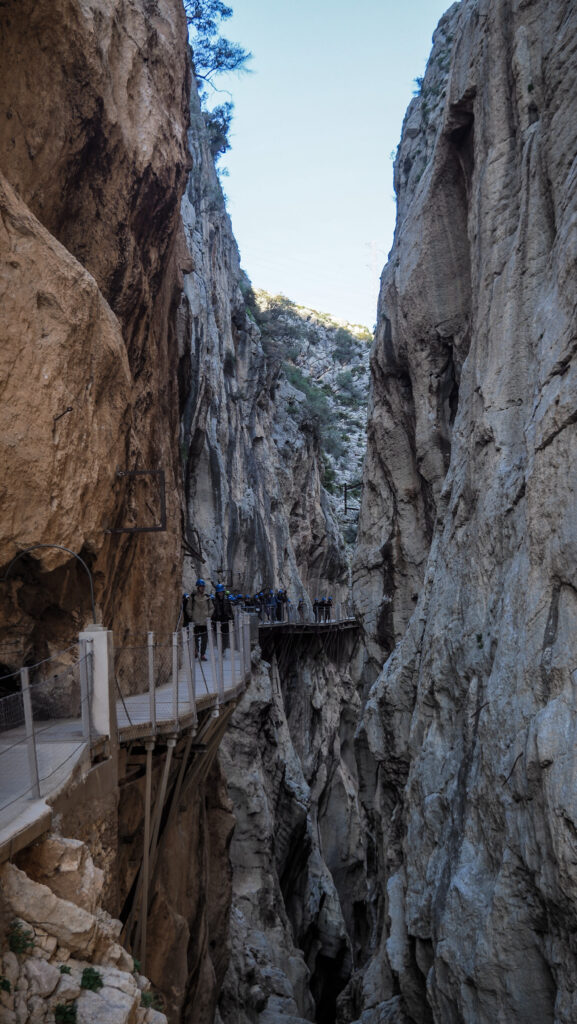


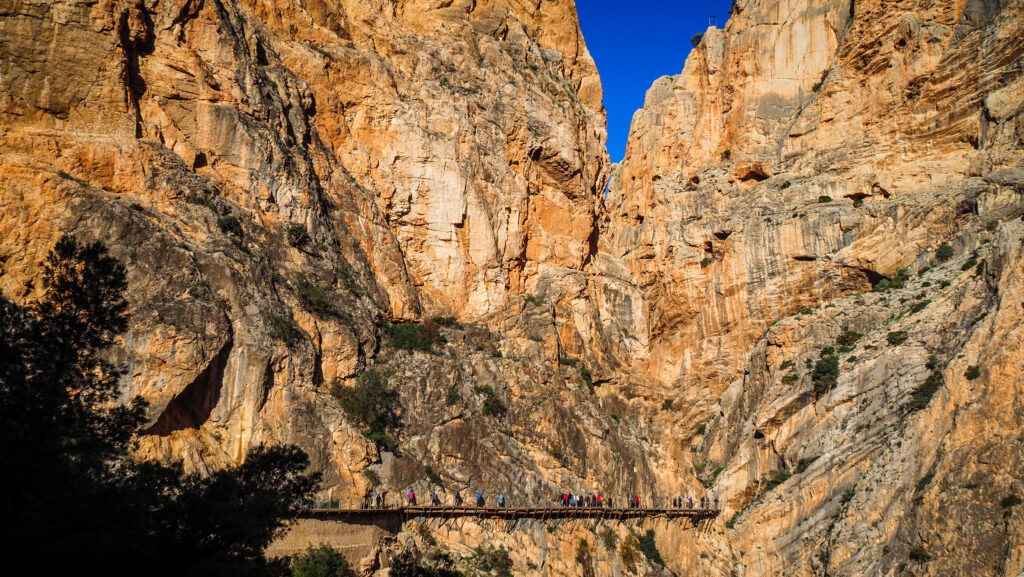
The metallic boardwalk hangs 105 meters above the ground and is 35 meters long. Luckily, it isn’t too shaky even in strong winds so I was able to cross it comfortably, even though I am normally not so easygoing with heights.

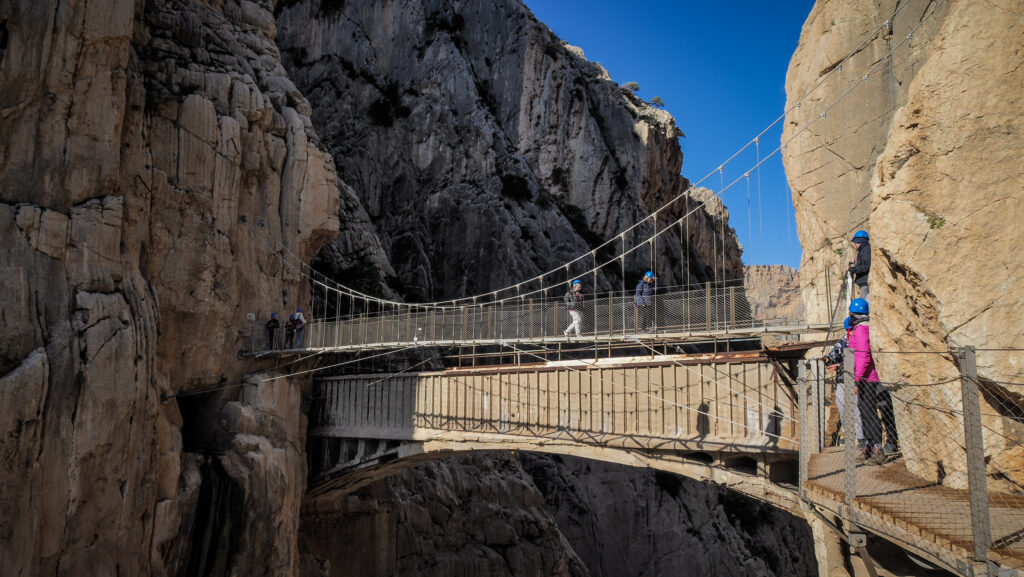

The last part of the trail goes down following the stairs and after you exit through the gate, it’s a wide path. We passed by the Chapel School also called ‘Ermita de la Medalla de la Milagrosa’. It was built by Rafael Benjumea, as well as other buildings in the village nearby for the children of technicians and workmen and later on for the workers of the Station Salto del Chorro.
Shortly after, we reached the place with chairs and tables as well as small boots serving food and drink. It was the end of El Caminito del Rey!
I was perfectly satisfied with the guided tour. The guides were amiable and explained everything in two languages: Spanish and English. There was no pressure to walk faster or slower so everyone had enough time to enjoy the place and take plenty of pictures.


